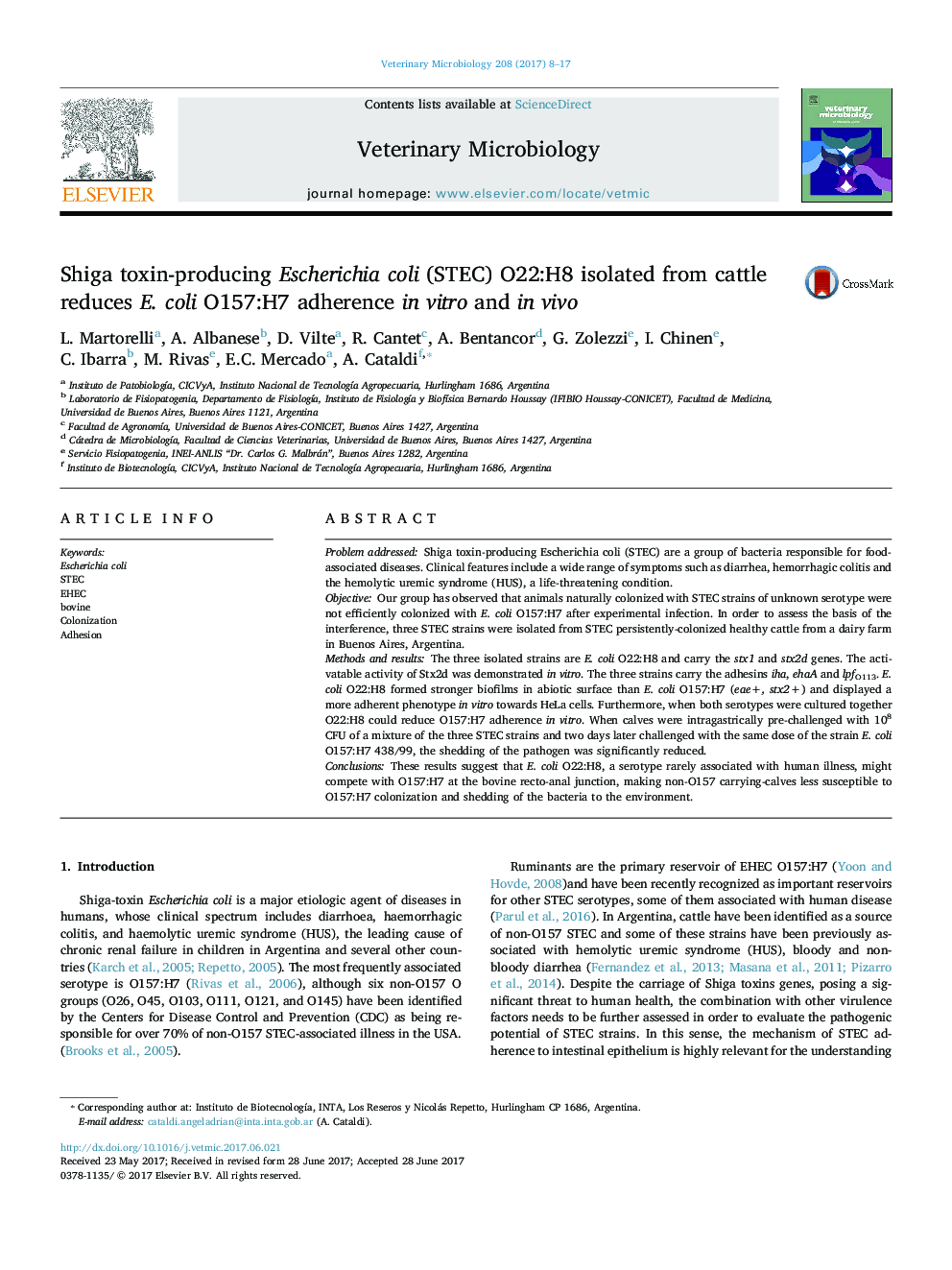| Article ID | Journal | Published Year | Pages | File Type |
|---|---|---|---|---|
| 5545169 | Veterinary Microbiology | 2017 | 10 Pages |
â¢E. coli O22:H8 interfere with an effective colonization of cattle by E. coli O157:H7.â¢E. coli O22:H8 has a stronger adherence to epithelial cell lines than E. coli O157:H7.â¢E. coli O22:H8 has an enhanced biofilm production than that of E. coli O157:H7.â¢In contrast to E. coli O157:H7, E. coli O22:H8 has the adhesin lpfAO113.
Problem addressedShiga toxin-producing Escherichia coli (STEC) are a group of bacteria responsible for food-associated diseases. Clinical features include a wide range of symptoms such as diarrhea, hemorrhagic colitis and the hemolytic uremic syndrome (HUS), a life-threatening condition.ObjectiveOur group has observed that animals naturally colonized with STEC strains of unknown serotype were not efficiently colonized with E. coli O157:H7 after experimental infection. In order to assess the basis of the interference, three STEC strains were isolated from STEC persistently-colonized healthy cattle from a dairy farm in Buenos Aires, Argentina.Methods and resultsThe three isolated strains are E. coli O22:H8 and carry the stx1 and stx2d genes. The activatable activity of Stx2d was demonstrated in vitro. The three strains carry the adhesins iha, ehaA and lpfO113. E. coli O22:H8 formed stronger biofilms in abiotic surface than E. coli O157:H7 (eae+, stx2+) and displayed a more adherent phenotype in vitro towards HeLa cells. Furthermore, when both serotypes were cultured together O22:H8 could reduce O157:H7 adherence in vitro. When calves were intragastrically pre-challenged with 108 CFU of a mixture of the three STEC strains and two days later challenged with the same dose of the strain E. coli O157:H7 438/99, the shedding of the pathogen was significantly reduced.ConclusionsThese results suggest that E. coli O22:H8, a serotype rarely associated with human illness, might compete with O157:H7 at the bovine recto-anal junction, making non-O157 carrying-calves less susceptible to O157:H7 colonization and shedding of the bacteria to the environment.
